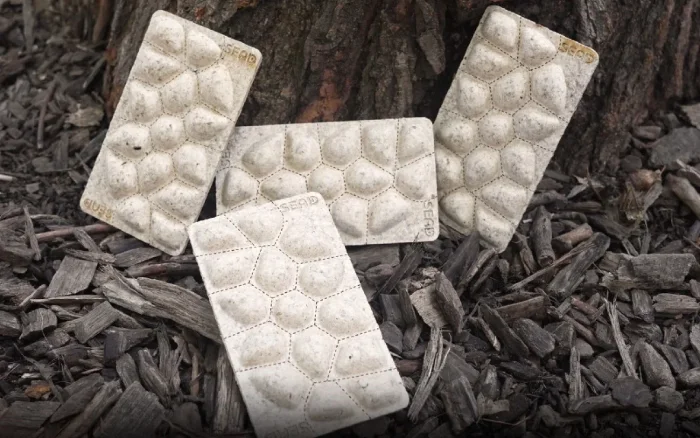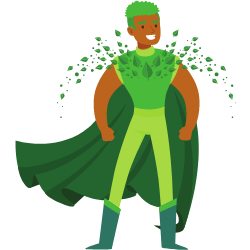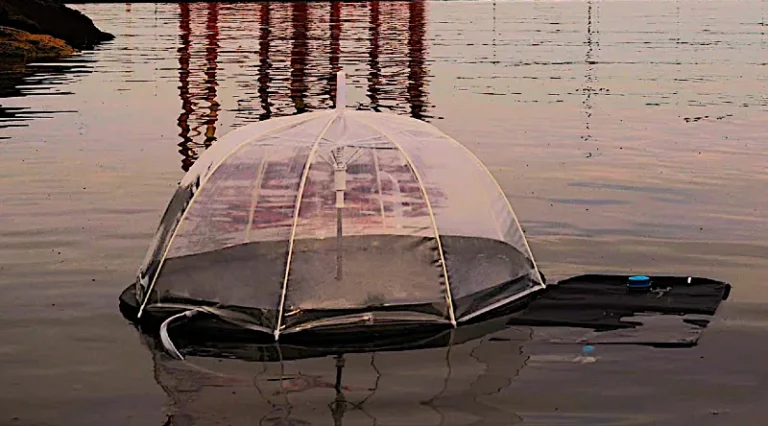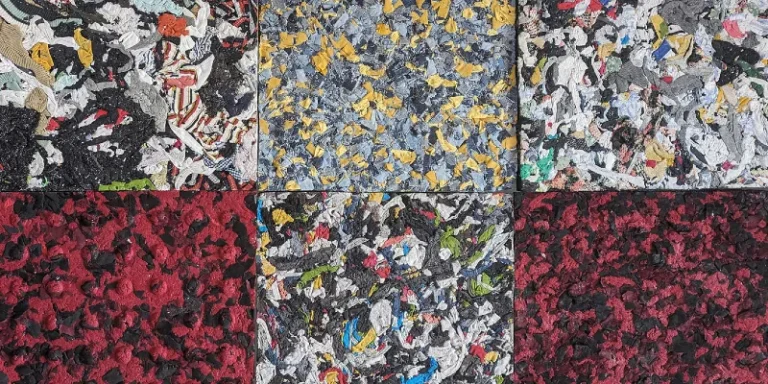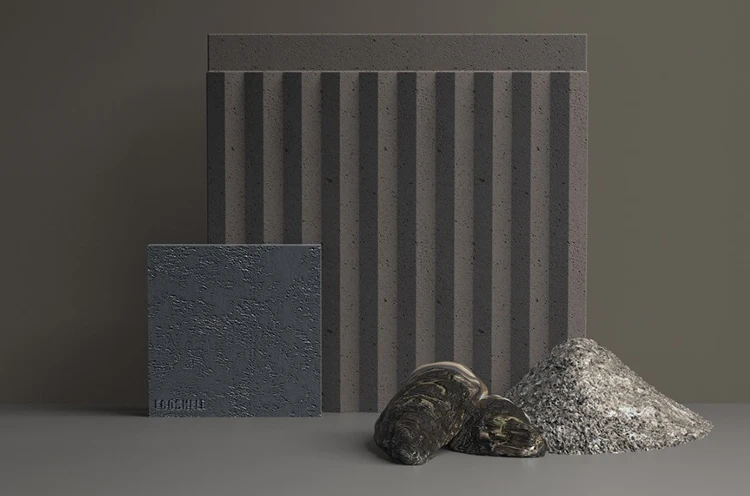In an inspiring blend of old and new, SEAD has created a solution to the mass quantity of seafood waste: biodegradable seed pods. These pods are turning what was once discarded into an asset for growing heirloom seeds. Each pod is created from waste materials that would otherwise contribute to environmental degradation.
Mara Zimmerman, the designer behind SEAD, envisions a world where sustainability is embedded in every aspect of life, especially in agriculture. Her design does more than just house seeds—it sparks a conversation about sustainable living and the reuse of materials.
SEAD’s timing is perfect; their approach taps into the growing need for sustainable packaging solutions. It highlights the potential of recycled materials, fostering a circular economy that lessens our impact on the planet.
The pods are made from chitin, a biopolymer derived from seafood shells, which isn’t only abundant but also biodegradable. This choice of material reduces reliance on virgin resources, paving the way for more sustainable production practices.
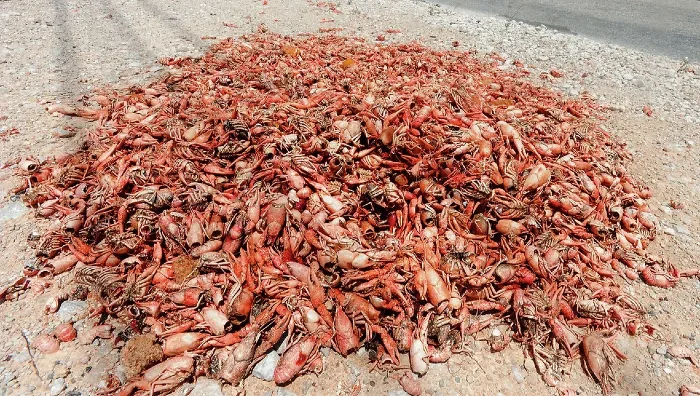
Heirloom seeds—varieties that have been cultivated and passed down through generations—are at the core of SEAD’s mission. These seeds carry unique characteristics and resilience, contributing to biodiversity and food security as environmental conditions change. By packaging these seeds, SEAD preserves their cultural and genetic legacy while promoting biodiversity.
But, as we all know, the word ‘heirloom’ is just flat-out good marketing these days!
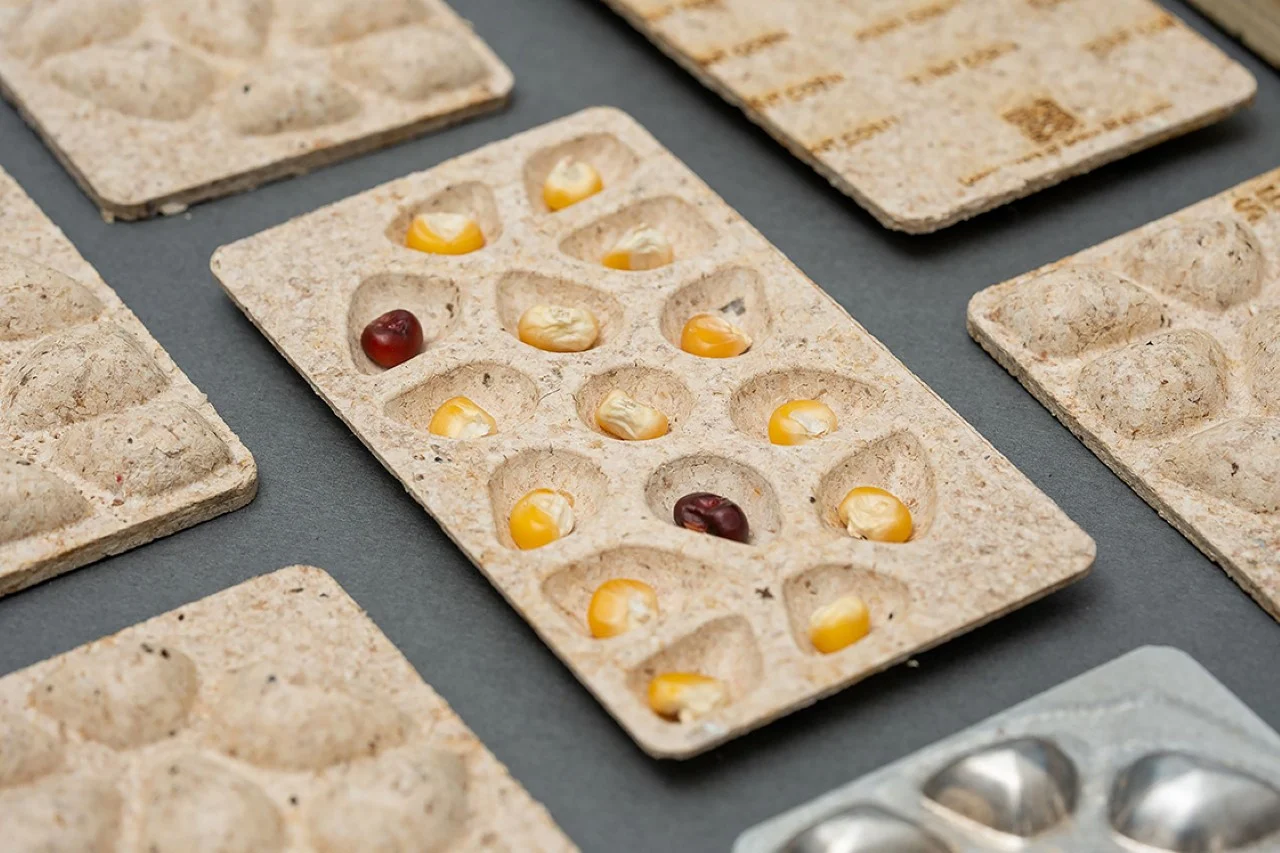
SEAD packaging’s use of chitin is unique in this niche when others have gone with more traditional materials. Chitin is both a sustainable material and a bio-stimulant. It enhances seed germination, supports crop growth, and naturally boosts plant defense mechanisms against pests and diseases. This adds an agricultural benefit to the packaging, extending its functionality beyond mere containment.
The production process of SEAD pods involves a three-step pressing technique that showcases the self-binding properties of chitin, eliminating the need for synthetic binders.
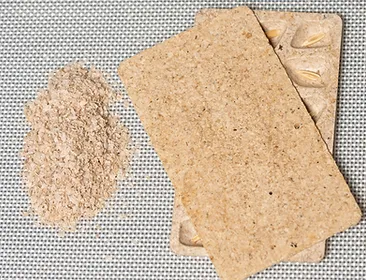
Step 1
Loose chitin is loaded into custom molds.

Step 2
The molds are pressed in a heated hydraulic press.

Step 3
Seeds are placed in the inverted top half of the mold. A thin layer of chitosan 'glue' is applied to surface contact points before the bottom half is placed on top. The SEAD bar is pressed for a final time.
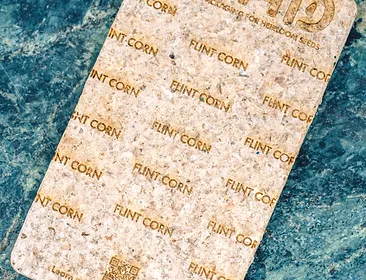
Step 4
The branding is now created using a laser engraving technique on front and back. The laser means no additional inks or dyes are added throughout the process.
The packaging is also designed for practicality and minimal environmental impact, featuring laser-engraved labels to avoid the use of harmful inks and dyes.
Designed to mimic natural fruit and vegetable structures, SEAD pods are not only functional but visually appealing. They added creases for easy tearing, allowing gardeners to plant seeds with minimal hassle and keep the remaining packaging intact. This design encourages practical and zero-waste gardening practices.
The steps for using SEAD pods are straightforward and integrate easily into any gardener’s routine: break the pods along perforated lines, crush them to expose the seeds, plant them, and store any unused portions. Simple!
A few simple steps for such a strongly sustainable gardening ethic that reinforces the connection between the gardener and the environment at the same time.
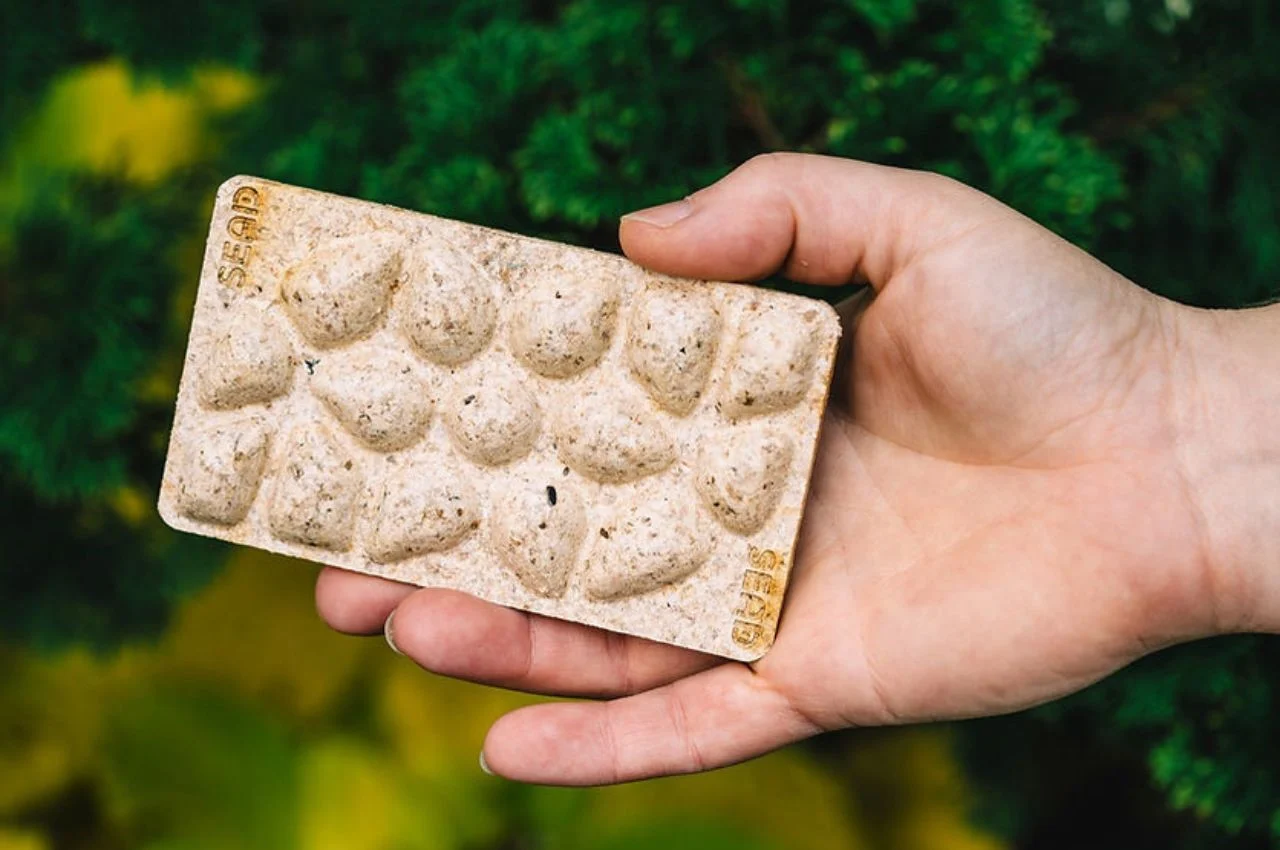
Despite its innovative approach, SEAD faces challenges in culturally diverse markets like India and Mexico, where vegetarianism is prevalent, and the use of seafood-derived materials might be contentious. Addressing these concerns requires sensitive and informed communication to highlight the ecological benefits without compromising cultural values.
By choosing SEAD, consumers are part of a movement towards sustainable agriculture and ecological resilience. Each pod planted is a step towards a sustainable future, making SEAD a meaningful choice for environmentally conscious individuals.







